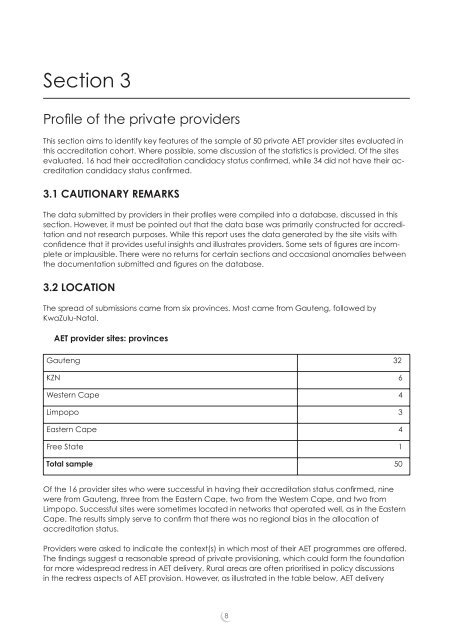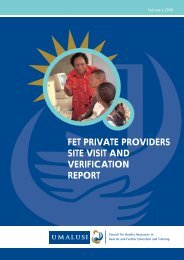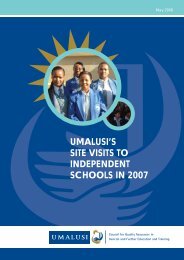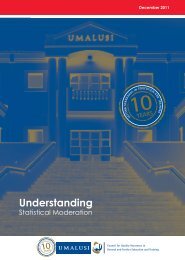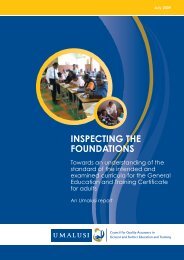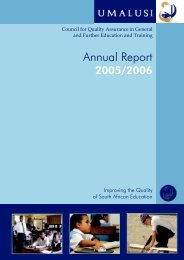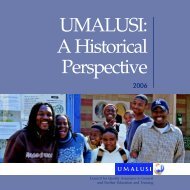Umalusi AET Report
Umalusi AET Report
Umalusi AET Report
- No tags were found...
Create successful ePaper yourself
Turn your PDF publications into a flip-book with our unique Google optimized e-Paper software.
Section 3Profi le of the private providersThis section aims to identify key features of the sample of 50 private <strong>AET</strong> provider sites evaluated inthis accreditation cohort. Where possible, some discussion of the statistics is provided. Of the sitesevaluated, 16 had their accreditation candidacy status confi rmed, while 34 did not have their accreditationcandidacy status confi rmed.3.1 CAUTIONARY REMARKSThe data submitted by providers in their profi les were compiled into a database, discussed in thissection. However, it must be pointed out that the data base was primarily constructed for accreditationand not research purposes. While this report uses the data generated by the site visits withconfi dence that it provides useful insights and illustrates providers. Some sets of fi gures are incompleteor implausible. There were no returns for certain sections and occasional anomalies betweenthe documentation submitted and fi gures on the database.3.2 LOCATIONThe spread of submissions came from six provinces. Most came from Gauteng, followed byKwaZulu-Natal.<strong>AET</strong> provider sites: provincesGauteng 32KZN 6Western Cape 4Limpopo 3Eastern Cape 4Free State 1Total sample 50Of the 16 provider sites who were successful in having their accreditation status confi rmed, ninewere from Gauteng, three from the Eastern Cape, two from the Western Cape, and two fromLimpopo. Successful sites were sometimes located in networks that operated well, as in the EasternCape. The results simply serve to confi rm that there was no regional bias in the allocation ofaccreditation status.Providers were asked to indicate the context(s) in which most of their <strong>AET</strong> programmes are offered.The fi ndings suggest a reasonable spread of private provisioning, which could form the foundationfor more widespread redress in <strong>AET</strong> delivery. Rural areas are often prioritised in policy discussionsin the redress aspects of <strong>AET</strong> provision. However, as illustrated in the table below, <strong>AET</strong> delivery8


